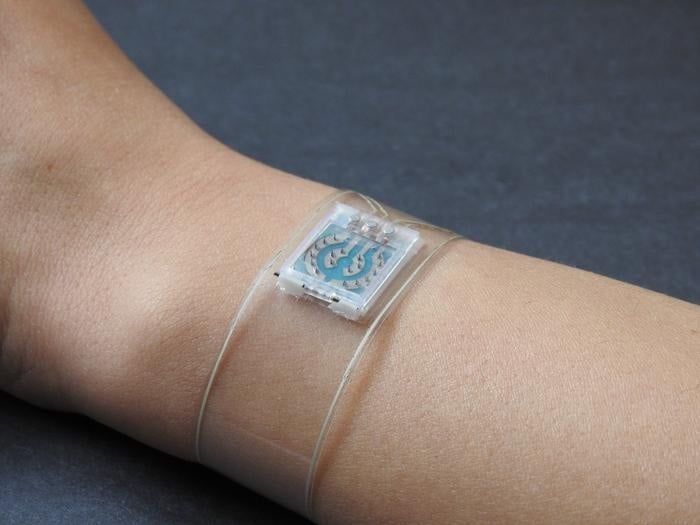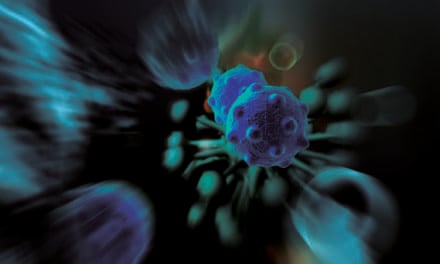Summary:
A new microneedle-based wearable wristband developed by UC San Diego researchers enables real-time, painless monitoring of glucose, alcohol, lactate, and cardiovascular signals, offering a comprehensive tool for improved diabetes management.
Takeaways:
- Multifunctional Sensing: The wristband continuously tracks glucose, alcohol, lactate, blood pressure, heart rate, and arterial stiffness—providing a fuller picture of metabolic and cardiovascular health.
- Painless and Replaceable Design: The device uses a microneedle array that painlessly samples interstitial fluid and is easily replaceable to support long-term, low-risk use.
- Clinical-Grade Accuracy: The wearable demonstrated strong accuracy across various tests compared to commercial medical devices, showing promise for real-world application and early health risk detection.
A new wearable wristband could significantly improve diabetes management by continuously tracking not only glucose but also other chemical and cardiovascular signals that influence disease progression and overall health. The technology was published in Nature Biomedical Engineering.
Wristband Consists of Microneedle Array
The flexible wristband consists of a microneedle array that painlessly samples interstitial fluid under the skin to measure glucose, lactate and alcohol in real time using three different enzymes embedded within the tiny needles. Designed for easy replacement, the microneedle array can be swapped out to tailor wear periods. This reduces the risk of allergic reactions or infection while supporting longer-term use.
Simultaneously, the wristband uses an ultrasonic sensor array to measure blood pressure and arterial stiffness, while ECG sensors measure heart rate directly from wrist pulses. These physiological signals are key indicators of cardiovascular risk, which is often elevated in people with diabetes but is rarely monitored continuously outside of a clinical setting.
“Comprehensive and effective management of diabetes requires more than just a single glucose reading,” says An-Yi Chang, a postdoctoral researcher in the Aiiso Yufeng Li Family Department of Chemical and Nano Engineering at UC San Diego.
Factors like diet, alcohol intake, exercise and stress influence blood sugar and heart health in ways that traditional monitoring systems cannot fully capture.
“By tracking glucose, lactate, alcohol and cardiovascular signals in real time, this pain-free wristband can help people better understand their health and enable early action to reduce diabetes risk,” adds Chang, who is a co-first author on the study with Muyang Lin, Lu Yin and Maria Reynoso, all from the same department.
Wearable System Result of Collaborative Effort
The development of this wearable system was made possible by the collaboration of the research groups led by Joseph Wang and Sheng Xu, both professors in the Aiiso Yufeng Li Family Department of Chemical and Nano Engineering at the UC San Diego Jacobs School of Engineering. Wang’s group specializes in creating wearables that can monitor multiple chemical biomarkers in the body simultaneously, while Xu’s group specializes in developing wearable ultrasound sensors that can monitor cardiovascular signals deep inside the body. By combining their expertise, the teams designed a device that provides continuous, simultaneous measurement of biomarkers and cardiac signals in a single wearable wristband platform.
A smart device linked to the wristband displays live data streams from the sensors. It shows blood pressure, heart rate and arterial stiffness alongside real-time readings of glucose, alcohol and lactate levels. This enables wearers to see how daily activities—like meals, alcohol intake or exercise—affect their body in real time and in turn, obtain personalized insights into their metabolic and cardiovascular responses.
Monitoring Results Consistent with Dedicated Medical Devices
The wristband demonstrated excellent agreement with commercial devices across a variety of tests. When monitoring glucose, results closely matched those of a blood glucose meter and continuous glucose monitor while simultaneously capturing cardiovascular responses. Similarly, tests tracking alcohol intake aligned with a breathalyzer, and lactate monitoring during exercise paralleled results from a blood lactate meter. At each step, the wristband provided continuous, simultaneous monitoring of additional signals, including real-time quantitative blood pressure, heart rate and arterial stiffness.
This capability could offer wearers a comprehensive physiological snapshot during everyday activities. It could also help patients and clinicians identify dangerous trends before they escalate, potentially alerting users to cardiovascular risks that traditional glucose monitors would miss.
Next steps include expanding the wearable system to include additional chemical and cardiovascular markers, and designing it to be powered by sweat or sunlight. The researchers also envision integrating machine learning algorithms to analyze the vast amounts of personal data the system collects.
Featured Image: The wristband consists of a microneedle array worn on top of the wrist to measure glucose, alcohol and lactate levels in the interstitial fluid under the skin. Image: An-Yi Chang





